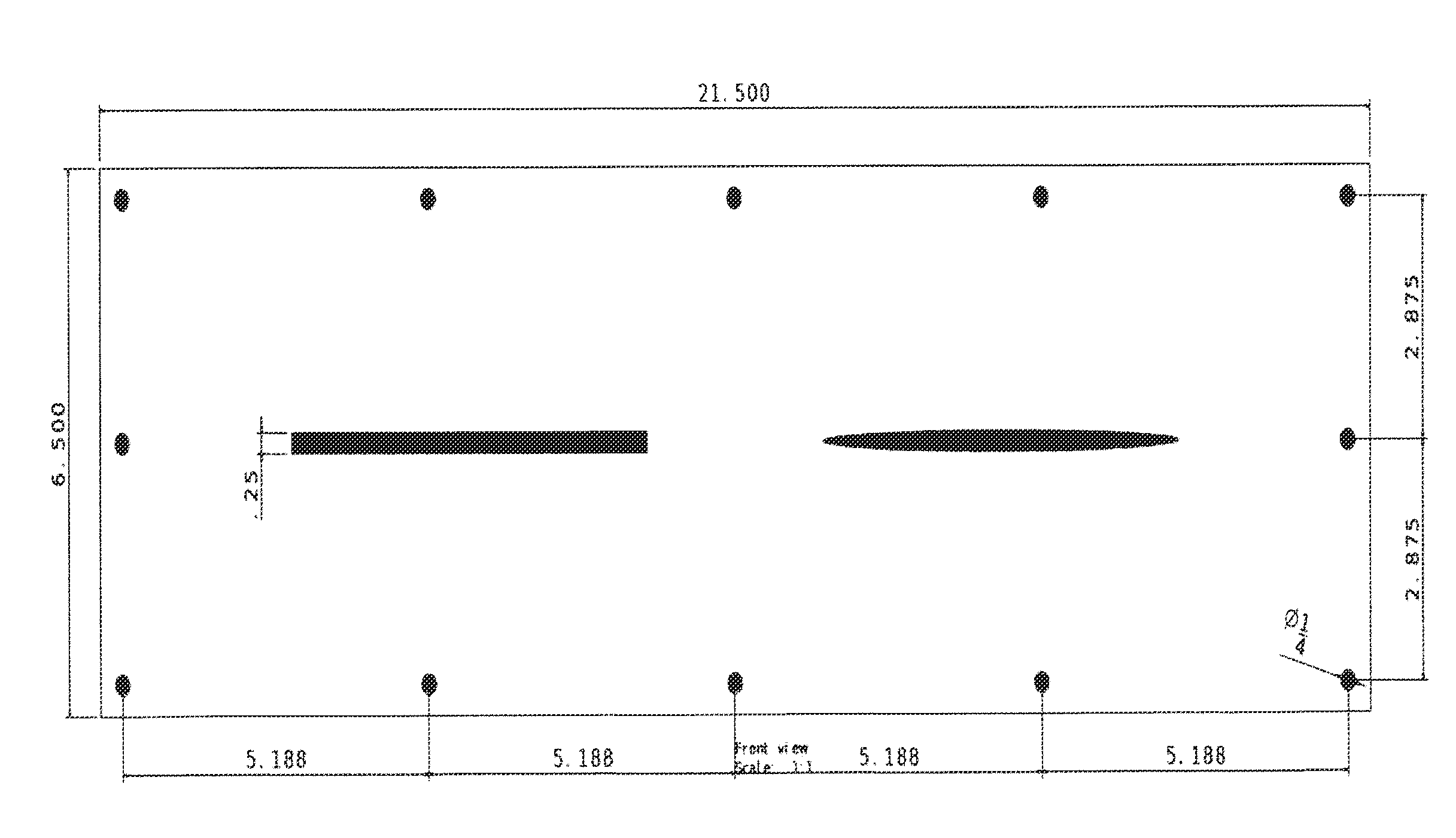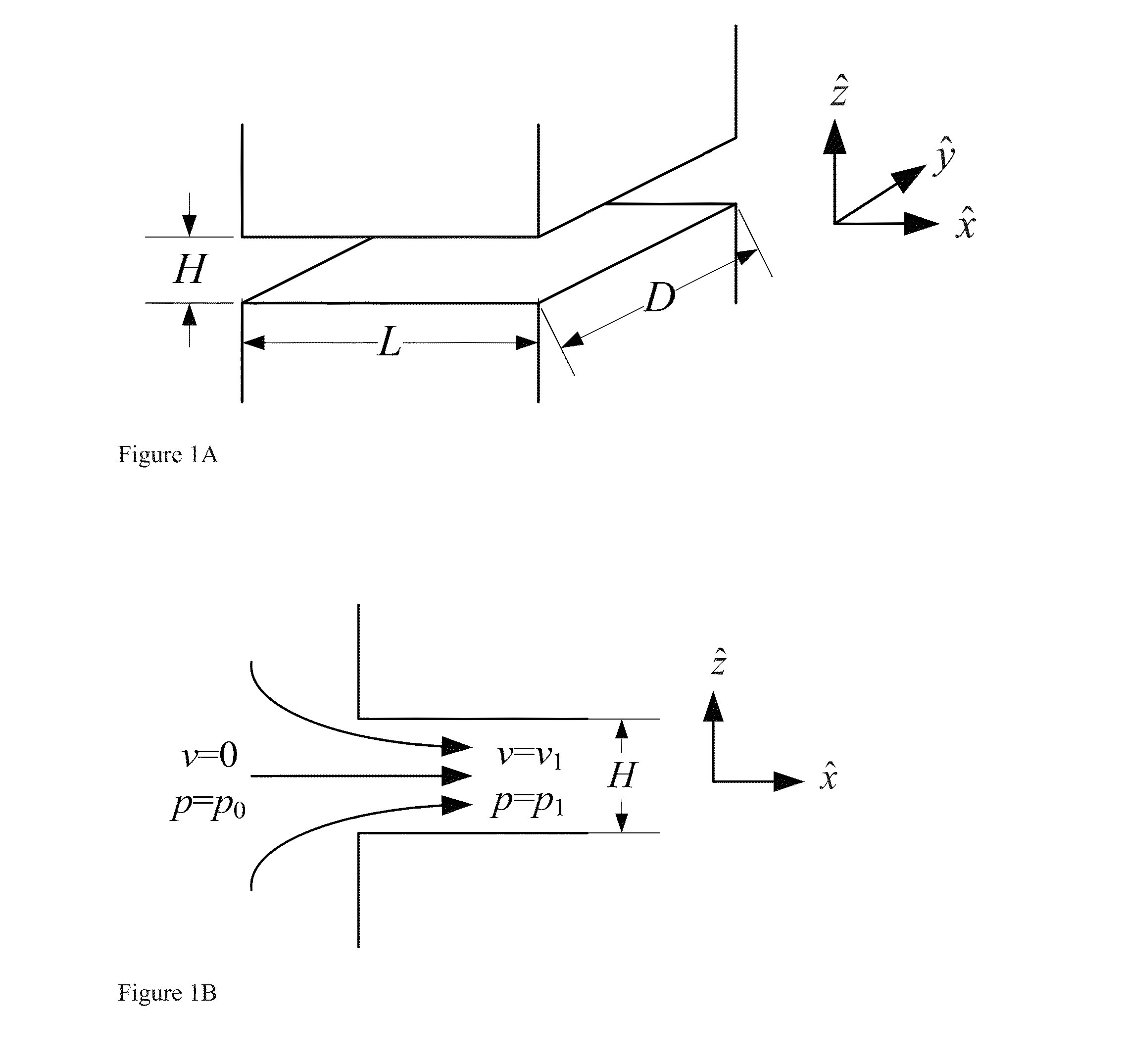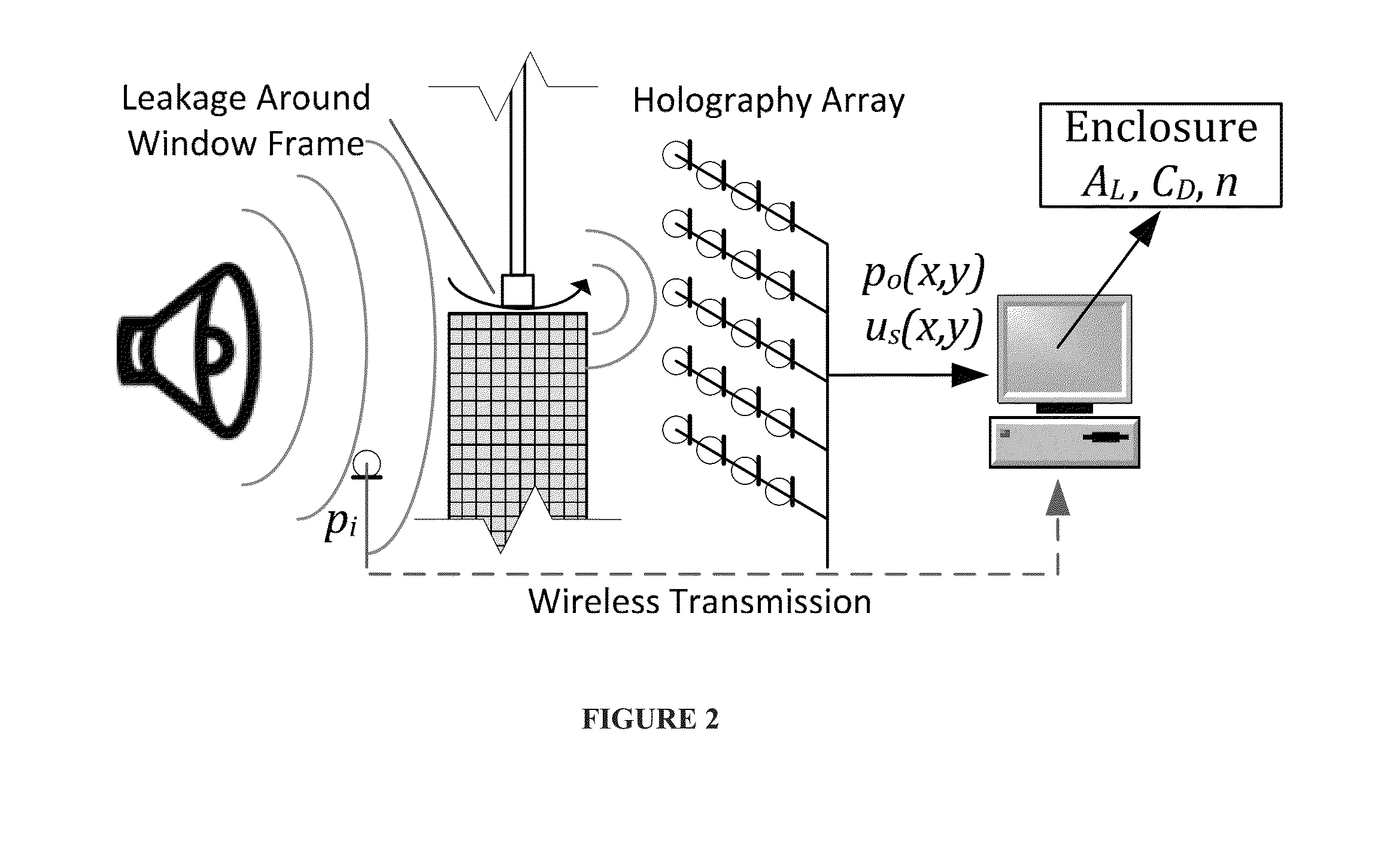Acoustic building infiltration measurement system
a measurement system and infiltration technology, applied in the field of leakage or infiltration detection, can solve the problems of increasing the difficulty and cost of sealing the building, affecting the operation of the measurement system, and the method is not practical for large buildings
- Summary
- Abstract
- Description
- Claims
- Application Information
AI Technical Summary
Benefits of technology
Problems solved by technology
Method used
Image
Examples
examples
[0127]This section describes experiments regarding certain implementations of the present invention. To qualify various algorithms of NAH a loudspeaker experiment was designed. A sub-woofer of diameter 10 inches was placed in an anechoic chamber located at IIT Fluid Dynamics Research Center. Simultaneous measurement at all the points in the hologram is not necessary for the frequency domain NAH analysis that are used in this study. Therefore, a single microphone fixed on a motorized traverse (shown in FIG. 2(a)) is used to record the sound signal on a two dimensional surface (which is called hologram surface). The hologram surface is located at distance 0.5 inches from the source. A quarter inch, B & K (model 4338) microphone is used here with appropriate power supply and filter. 204800 samples are acquired using an NI DAQ module at a rate of 100 kHz. The measurement aperture is 28 in×28 in rectangle with 113×113 measurement points (0.25 in between adjacent measurement points). A si...
PUM
 Login to View More
Login to View More Abstract
Description
Claims
Application Information
 Login to View More
Login to View More - R&D
- Intellectual Property
- Life Sciences
- Materials
- Tech Scout
- Unparalleled Data Quality
- Higher Quality Content
- 60% Fewer Hallucinations
Browse by: Latest US Patents, China's latest patents, Technical Efficacy Thesaurus, Application Domain, Technology Topic, Popular Technical Reports.
© 2025 PatSnap. All rights reserved.Legal|Privacy policy|Modern Slavery Act Transparency Statement|Sitemap|About US| Contact US: help@patsnap.com



